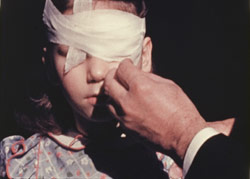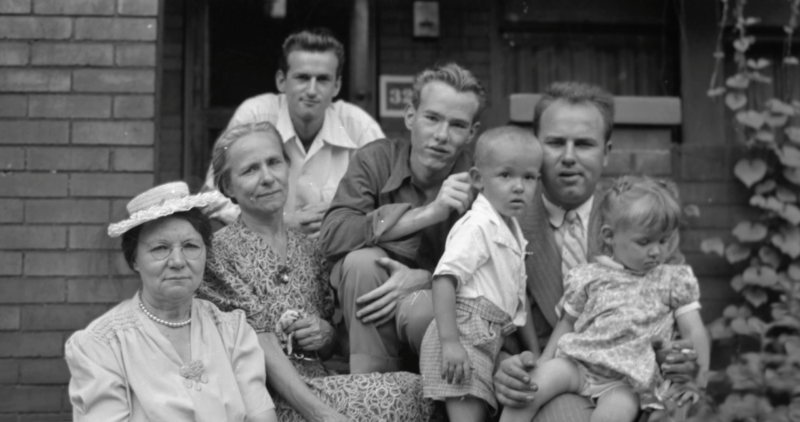Series Zero-Sum: The Emergency First Aid Suite, parts 1-6 with live score by Michael Johnsen
Friday, September 16, 2011, 8 p.m.

Emergency First Aid, Part Six – Roller Bandaging (1942)
A Study Course in Motion Pictures to Aid Civil Defense Volunteers
Produced by Jacob Sarnoff, M.D.
Edited & Narrated by Wm. F. Kruse
Approved by Bert H. P. Bachman, First-Aid Director American Red Cross Brooklyn, N.Y. Chapter
Imagine if a bisexual, fetish filmmaker had been asked to make a series of emergency first aid films for Americans during the Second World War complete with pajamas, jewelry, nail polish, and blankets with the subjects framed against deep, black backgrounds and lusciously photographed on Kodachrome color motion picture film.
Or, dryly put: “Scenes show how quick, yet careful, examination is made for bleeding, breathing and consciousness. Principal blood vessels and pressure points at which to check hemorrhage are shown, by means of anatomical charts, living models and actual or simulated wounds. Artificial respiration is demonstrated.
“The film is replete with unique teaching devices. For example, the paths of the principal arteries are drawn in grease paint on the body of a living model, and the pressure points likewise are indicated by means of circles of contrasting color. Again, in the resuscitation sequence, an ingenious articulated rib structure is included in the picture, to show just how the external pressure on the ribs simulates the normal contraction and expansion of the chest in breathing.” – Movie Makers magazine on Fainting Shock Bleeding.
This is the Pittsburgh Premiere of the complete film with live score composed and played by Pittsburgh instrument builder and performer Michael Johnsen. Born in 1968 in Pennsylvania and drawing on the rich American tradition of cobbling, Johnsen has built up, specifically for live performance, an integrated menagerie of electronic devices whose idiosyncratic behaviors are revealed through their complex interactions. His work is characterized by a relative lack of ideas per se, and an intense focus on observation, the way a shepherd watches sheep.
The suite:
Part One – Fainting Shock Bleeding
Part Two – Bandaging Wounds & Burns
Part Three – Fractures
Part Four – Traction Splints for Fractures
Part Five – Transporting the Injured
Part Six – Roller Bandaging
All films 16mm, color, silent.
Approximate running time is 80 minutes.
Films courtesy The Orgone Archive


